Explanatory Note Data on healthcare utilization in the MIMAROPA Region were obtained from the results of the 2022 National Demographic and Health Survey (NDHS). The 2022 NDHS is the seventh Demographic and Health Survey (DHS) conducted in the Philippines in collaboration with the worldwide DHS program and the 12th in the series of NDHS conducted every five years since 1968. Healthcare utilization plays a pivotal role in the overall well-being of every Filipino. The 2022 NDHS provides relevant statistics on healthcare utilization in the MIMAROPA Region. |
Public medical facilities were commonly visited first for treatment purposes
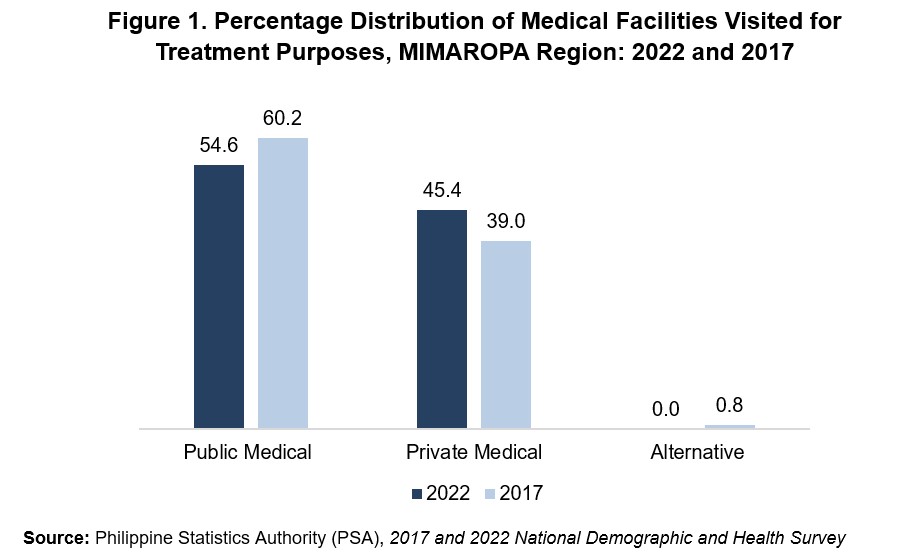
Public medical facilities were commonly visited first by patients from the MIMAROPA Region who are seeking treatment or advice for their health conditions. In 2022, 54.6 percent of these respondents went to public medical facilities first for treatment, which is 5.6 percentage points lower than 60.2 percent in 2017. The remaining 45.4 percent of the respondents prioritized going to a private medical facility first, which is 6.4 percentage points higher than 39.0 percent in 2017. (Figure 1 and Table 1)
Private clinics were the most utilized private health facility
Among private medical facilities, private clinics served the most patients (31.6%) who utilized at least one healthcare facility. This amounts to a 14.5 percentage point increase from 17.1 percent in 2017. This was followed by barangay health stations with a 20.2 percent utilization rate in 2022. Private hospitals followed at 12.7 percent utilization rate in 2022 but had an 8.7 percentage point decline from the reported 21.4 percent utilization rate five years ago. (Figure 2 and Table 2)
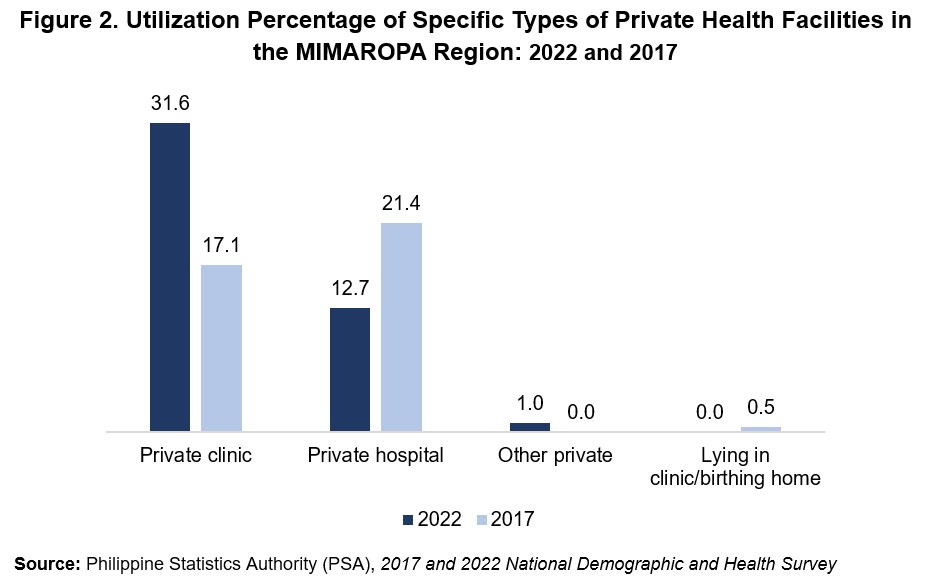
Barangay health stations served the most patients of all the public health facilities
Among public medical facilities, Barangay Health Stations served the most patients, constituting 20.2 percent of the total respondents who utilized at least one healthcare facility. This amounts to a decline of 6.1 percentage points from 26.3 percent utilization rate reported in 2017. This was followed by Rural Health Units, urban health centers and lying-in clinics with a 13.3 percent utilization rate in 2022. (Figure 2 and Table 2)
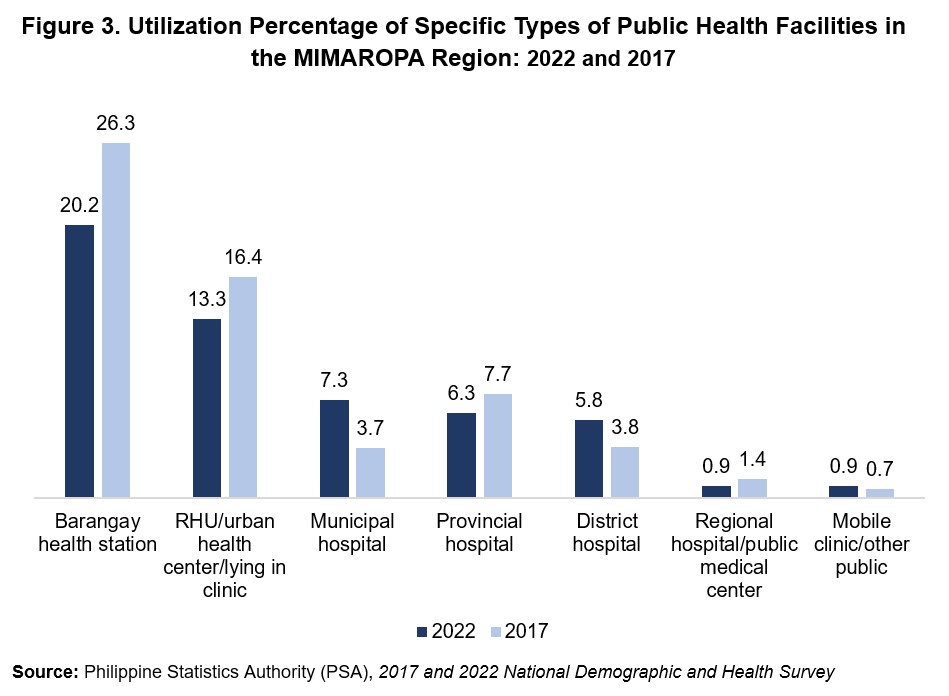
Patients were confined mostly in public medical facilities
In 2022, public medical facilities led in inpatient hospital care, recording 70.5 percent of all the confinements of the respondents. This marked a 16.1 percentage point increase in the total attendance from 54.4 percent in 2017. Provincial hospitals led all public medical facilities in total confinements as reported by 33.5 percent of respondents who availed in-patient hospital care.
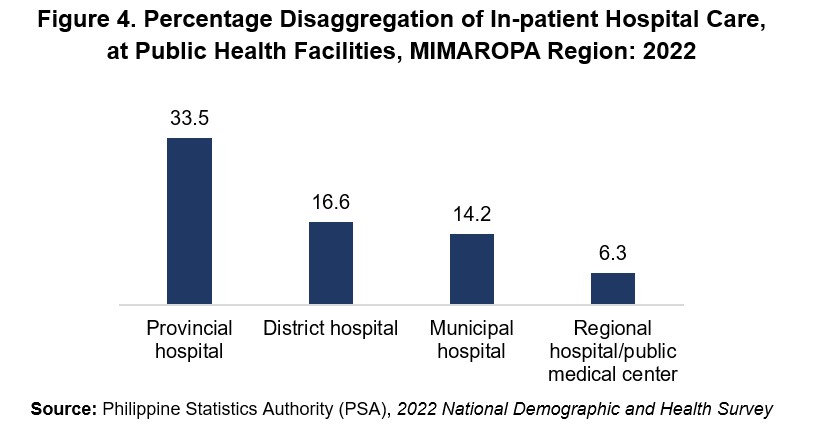
On the other hand, private medical facilities recorded a decrease in the total in-patient hospital care, totaling only 29.5 percent in 2022 from 45.6 percent of the total respondents in 2017. This represents a contraction of 16.1 percentage points in total attendance. Private hospitals recorded 26.7 percent of all confinements, followed by private lying-in clinics/birthing homes with 2.1 percent and private clinics with 0.7 percent.
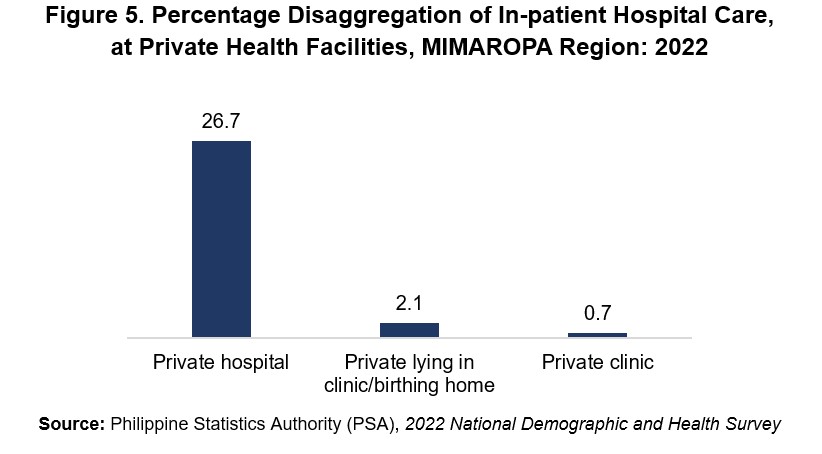
(SGD) LENI R. RIOFLORIDO
Regional Director
MLLM / RRL / MGTF / AMO

